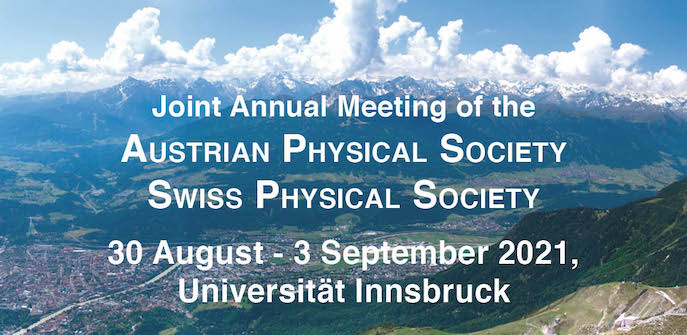High power consumption represents a major bottleneck for conventional transistor technologies (MOSFETs), due to the inability of further reducing supply voltage while simultaneously limiting the off-state leakage current. This limitation can be overcome by Tunnel FETs, a novel transistor concept based on the quantum-mechanical band-to-band tunneling. During my PhD research, I demonstrated the...
In this contribution, we discuss the catalytic formation of NH3 using radiofrequency (RF) N2-H2 plasmas and a tungsten (W) foil. A parametric study was done at various RF powers (30–300 W), discharge pressures (2–5 Pa), gas compositions (10–90% N2) and discharge temperatures (< 673 K). NH3 generally increased with the electron density and/or electron temperature, whereas the discharge...
The First Mirrors (FMs) in ITER diagnostic systems would be subject to deposition of material from the first wall (Be and W), which would severely compromise their optical properties. For a restoration, they would be routinely cleaned using RF discharges. The FMs would also be DC-grounded via a RF quarter wavelength filter, which significantly increases the plasma potential (from 30 V to over...
Metallic first mirrors will be close to the fusion plasma in ITER and might suffer from erosion and deposition coming from the first walls of the fusion reactor. Consequently, the optical diagnostics system can be compromised. The most promising in-situ technique to remove these deposits while restoring the mirrors optical properties is plasma sputtering. This contribution discusses the...
Atoms of antihydrogen can be formed by slowly merging cryogenic positron and antiproton plasmas. The ASACUSA collaboration will measure the ground state hyperfine splitting of these atoms, using a sextupole magnet to analyze the atoms after they pass through a microwave spin-flip cavity. This spectroscopy beamline has been tested with ordinary hydrogen, achieving ppb precision. The remaining...
The control of plasma position and shape is fundamental to achieve high performance in fusion tokamaks. This work compares different approaches for the simulation of the plasma evolution coupled to controller dynamics: FGE (Forward free-boundary Grad-Shafranov Evolutive code), FGElin (FGE linearised version) and RZIp, all implemented as part of the same tokamak simulation suite MEQ. FGE solves...
Gas discharges in transparent electrodes have been investigated in a double-cathode coaxial cylindrical system. Optimal working conditions for the discharges have been established. Spectral measurements of the optical emission have been performed to obtain discharge geometry and distribution profiles of the populations of excited and ionized gas particles. A well-defined less luminous plasma...
The question, if it is possible to generate SF6$^{+}$ and to keep it stable until it can be observed has been the purpose of numerous experiments. Embedding the molecule in positively charged helium nanodroplets answers finally this question. High resolution mass spectrometry reveals not only the ion surrounded with helium, with further experimental techniques the evaporation process of the...
2-deoxy-2-fluoro-D-glucose (FDG) is a glucose analog with the hydroxyl group at C2-position replaced by a fluorine atom and has been proposed as a potential radiosensitizer. Herein we present our findings on electron-induced dissociations in FDG upon low-energy electron attachment in the gas phase using a crossed electron/molecular beam setup. The experiment was carried out within the energy...
Building on our recent report on the production of stable, highly charged droplets of superfluid helium, a new experimental method was designed to investigate chemical reactions in the sub-kelvin environment with a significantly higher ion yield compared to previous setups. We demonstrate a novel method of softly ionizing dopant molecules by proton transfer, while largely preventing...
Polycyclic aromatic hydrocarbons (PAHs) are isolated in multiply charged helium nanodroplets (HNDs). The charged dopant molecules are again liberated from the droplets upon collision with a stainless-steel surface, but remain decorated with up to several tens of helium (He) atoms. Action spectroscopy is performed on these He tagged species. A tunable pulsed laser is used for excitation and ion...
The amide compound formamide (CH3NO; FA) is a smallest molecule with a peptide bond and is an important biological precursor. Previous dissociative electron attachment studies with deuterated derivatives of FA in gas phase showed that this compound can act as an agent for electron-induced surface functionalisation of hydrogen-terminated materials. In the present study, we investigated the...
Charge-transfer processes, particularly in salt clusters, depend sensitively on the chemical environment. Studying such charge-transfer behaviour is ideally suited to gas-phase clusters, whereby the size and chemical composition can be controlled. To understand these charge-transfer processes at a molecular level, laser spectroscopic measurements in the ultraviolet and visible region are...
Electron capture by molecules leads to the formation of transient negative ions, which may dissociate through dissociative electron attachment (DEA). DEA to the 1-bromoacetyl-3,3-dinitroazetidin (RRx-001) molecule in the gas phase has been studied utilizing a crossed electron-molecular beam setup combined with a quadrupole mass spectrometer. RRx-001 has been proposed as a radiosensitizer. We...
Nitrofurans have been used as antibiotics or antimicrobials in human and veterinary medicine. The underlying mechanism is ascribed to the reduction of the nitro group by nitro reductases, producing the electrophilic intermediates nitroso and hydroxylamine, which are capable of binding to DNA and other biomolecules in microorganisms. In the present study, we investigated electron attachment to...
